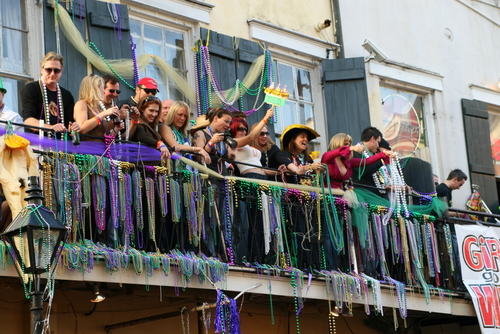
Floats, nudity and parades: Mardi Gras is a time of revelry and raucousness. From king cakes to sparkly beads, here are five fun facts about the origins of Mardi Gras fixings.
Early history
Fat Tuesday has been a day of revelry in Europe since the Middle Ages. But it took a few more centuries for the tradition to catch on in the United States. In 1699 the French explorer who made land about 60 miles (97 kilometers) from New Orleans, Jean-Baptiste Le Moyne, Sieur de Bienville, named the locale Mardi Gras point upon realizing the day of the arrival. But it wasn't until the 1730s that Mardi Gras was celebrated in the city. The first official Krewes — groups named after a Greek or Roman hero or god that arrange all the details for the big parades — didn't get their start until 1857, according to the Louisiana State Museum Mardi Gras website.
Ancient roots
In the olden days, Mardi Gras, or Shrove Tuesday, was a last chance to indulge in rich, fatty foods before the austerity of Lent, the season before Easter. But the holiday may date back even further than that: When Christianity took root in Rome, it may have been easier to roll old hedonistic holidays into the Christian calendar, rather than banning them outright. So the mid-February feast of Lupercalia, which the historian Plutarch describes as a raucous holiday of men running through the streets naked, may have lent its hedonistic elements to Mardi Gras. Nowadays, Carnival (Mardi Gras) occurs throughout South America and Europe. [In Photos: A Journey Through Early Christian Rome]
Rich foods
Fat Tuesday got its name from the French tradition of eating rich, fatty foods before the austerity of Lent, the 40 days before Easter. At one point, a fattened calf was slaughtered on Fat Tuesday, and in England it was called Shrove (or Pancake) Tuesday for the tradition of eating pancakes, according to the Catholic Encyclopedia.
Get the world’s most fascinating discoveries delivered straight to your inbox.
King cake
Another Mardi Gras tradition, the king cake, was described as far back as the 1600s. At one point a pea or a bean, and nowadays a trinket (or often a plastic baby Jesus) is buried in a rich cake for a lucky person to find. The king cake takes its name from the three Magi who are said to have visited Jesus after his birth.
Beads and Floats
Beads didn't start to emerge in the Mardi Gras parades until the late 1800s, when some of the Krewes who organized the parades began handing out cheap glass bead necklaces. Tourists loved them, and the beads became part of the tradition. Floats have been a key element of Mardi Gras celebrations in Europe since Medieval times, and during the early years of New Orleans Mardi Gras, citizens imported floats from France. It wasn’t until the late 1800s that floats were made exclusively in the United States.
Follow LiveScience on Twitter @livescience. We're also on Facebook & Google+.

Tia is the managing editor and was previously a senior writer for Live Science. Her work has appeared in Scientific American, Wired.com and other outlets. She holds a master's degree in bioengineering from the University of Washington, a graduate certificate in science writing from UC Santa Cruz and a bachelor's degree in mechanical engineering from the University of Texas at Austin. Tia was part of a team at the Milwaukee Journal Sentinel that published the Empty Cradles series on preterm births, which won multiple awards, including the 2012 Casey Medal for Meritorious Journalism.
